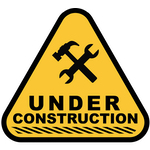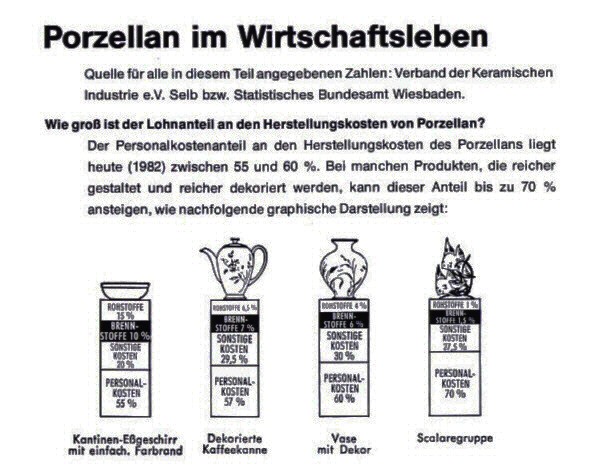Price factors
The production of porcelain is subject to a variety of different cost factors. It makes no difference whether it is German, European, Turkish or Asian porcelain. This article is intended to provide a little understanding of the many incalculable price criteria that ultimately come together as "white gold".

Energy costs
With the increasing scarcity of fossil fuels, energy costs in porcelain production are a steadily rising factor. In the relevant reference books, you can still find figures and statistics on energy costs "back in the day", which we are unfortunately (please excuse us, Dr Friedl) allowed to correct somewhat here. Firstly, the statistics from the current reference books: Porcelain in economic life - source for all the figures given in this section: Verband der Keramischen Industrie e.V. Selb bzw. Statistisches Bundesamt Wiesbaden. How large is the share of labour in the production costs of porcelain?
The proportion of labour costs in the production costs of porcelain today (1982) is between 55 and 60%. For some products that are more elaborately designed and decorated, this proportion can rise to 70%, as the following graph shows:

These figures date back to the early 1980s and are no longer exactly the same today! The cost ratio of energy costs in porcelain production has also changed with the shortage of fuel supplies and the increase in the price of raw materials (gas and heating oil). Depending on the country, article and type of production, the proportion of energy costs in the total costs (as of January 2006) can rise to 70%.
Raw materials
We describe the quality of raw materials and glazes in detail in our product information section. As with almost all goods on this earth, the same applies to porcelain: the higher the quality of the raw materials, the more expensive the final price of the product. The layman cannot judge the quality and value of the porcelain material. Hardly able to distinguish between stoneware, ceramics and porcelain, people are quick to compare apples with pears.
Series business
Here, a wide variety of items are integrated into a coherent series (plates, bowls, platters, tins, etc.). The manufacturer/distributor is obliged to its customers to realise repeat purchases even in smaller quantities. This means that items are also produced in small quantities, which drives up production costs. The longer a machine runs to produce one and the same item, the more favourable the production costs become. The "changeover costs" of the machines play a major role here, as these "idle times" cost a lot of money. It can therefore be said that series products are generally more expensive than batch products. The "series business" should not be confused with the "sale of complete series", i.e. when Tchibo & Co "crushes" a coffee or dinner service for "an apple and egg" and charges stupid prices such as "4 euros" for a complete service. Everyone knows that the box itself costs almost that much, so we don't want to go into this form of "utilisation of leftovers" any further.
Lot goods
Items are individual items, remaining stock, production surpluses, remnants, low quality or returns. Goods in stock are generally excluded from a subsequent purchase guarantee; the following applies: "Only what is available". The price reduction compared to normal goods can be very substantial. Large foreign factories such as Lubiliana, Saturnia, POM, CIM, Tognana and others are particularly affected: We know from our own experience of discounts of up to 90% compared to the normal price when one of these companies is sitting on "large stocks". The current difficult economic situation is aggravated by the fact that every insolvency, plant closure and bankruptcy in the industry brings with it a flood of "cheap goods" and can block entire channels or product groups for a long time. The principle that applies to batch goods is: there is nothing that does not exist! For example, an item that is priced at 3.00 euros in a price list can be sold for 30 cents. It is pointless to think about "why" or "how come". Often these goods have already been paid for by another company (insurance claims, recourse and bankruptcy goods), so that such unrealistic prices come about. Especially when it is not a matter of buying more, goods in bulk are a worthwhile bargain!
Product knowledge - A request to our readers!
Since 1998, we have been cultivating our product knowledge out of a passion for porcelain and the endeavour to share our knowledge about this beautiful and exciting material. In more than 20 years, our information pages have grown into a free online encyclopaedia of porcelain knowledge and now serve as a helpful reference work for dealers, end customers, vocational schools and even competitors. In times of increasingly important reviews on the Internet, we therefore ask you to write us a small review on Google. This will help us to address topics that have not yet been dealt with and to constantly revise this knowledge database. Thank you very much.

